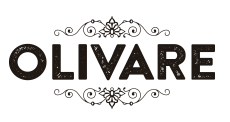With the right tools and systems in place, you can streamline the process of identifying and analyzing cost variances, allowing for quicker decision-making and more effective cost management. Here, we will explore some examples of technology solutions, along with tips and case studies, to help you leverage technology for improved financial control. The second step to managing cost variance is to track and measure the actual cost of the project against the budgeted cost at regular intervals. This will help to detect any cost variance early and to take corrective actions if needed.
Direct Labor Variance
A positive cost variance means that the project or process is over budget, while a negative cost variance means that it is under budget. Cost variance is one of the most important concepts in project management and cost accounting. It measures the difference between the actual cost and the standard or budgeted cost of a project or a process.
- Common causes of Usage Variances include errors in estimating Standard Quantities, changes in customer demand, and differences between the actual quality of materials or labor and the expected quality.
- Changes in input prices are often difficult to predict and can significantly impact.
- Many firms build these variances into several T-accounts, each bearing the name of the variance they represent.
- By identifying the causes of deviations between standard costs and actual costs, organizations can make informed decisions to improve their cost management strategies.
- That’s because multi-product firms’ sales volume variances could reflect overall sales changes or just a change in the sales mix.
- By doing so, they may be able to motivate workers to meet or exceed the target, resulting in increased productivity.
Integrate Your Accounting System
To address time variances, organizations can implement process improvement initiatives, conduct regular performance reviews, and provide employees with appropriate training and resources. Your accounting team likely already has a method for calculating standard cost vs actual cost, but how accurate is it? First of all, accountants tend to prefer adding actual cost to their general ledger to keep the books clean.
Examples of Standard Costing
© 2025 Anamma – Financial strategies, investment tips, and market analysis to help you achieve financial independence and multiply your wealth. When students hear this they inevitably ask me where the rest of the difference went. The difference is sitting in the warehouse, waiting to be put into production. Ultimately, whether management teams set yield targets too low or high on purpose depends on various factors. Some companies may do so to reduce risk, while others may increase motivation. Ultimately, it is up to each management team to decide what approach works best for them.
- By making these system and methodology changes, organizations can improve their ability to track actual costs, reduce inefficiencies, and make more informed financial decisions.
- The responsible party in this case is the factory manager or factory workers in general.
- These two revenue variances (i.e. sales price variance and sales volume variance) are usually all you need in a single-product firm.
- The yield variance can determine whether a production process is efficient or not.
1.3 The Profit Equation and Variance Analysis
These standards are compared to the actual quantities used and the actual price paid for each category of direct material. Any variances between standard and actual costs are caused by a difference in quantity or a difference in price. Therefore, the total variance for direct materials is separated into the direct materials quantity variance and the direct materials price variance.
Total direct material variance
If the yield variance is consistently negative, it may indicate defects in the product or an inefficient process. If the yield variance decreases over time, it may indicate that the manufacturing process is becoming more efficient. If the standard cost is too high, production will appear less efficient than it is, and bonuses will be withheld based on this false inefficiency.
The standard cost budget variance applies only to fixed costs and is the difference between the budgeted fixed overhead and the actual fixed overhead. In conclusion, harnessing the power of variance analysis is a cost variance is the difference between actual cost and standard cost. crucial for better financial decision-making. By regularly conducting variance analysis and taking appropriate actions, organizations can gain a competitive edge in today’s dynamic business environment. Production volume variance arises when the actual output differs from the budgeted or standard output. This variance can occur due to changes in demand, machine breakdowns, or labor shortages. For instance, if a company budgeted to produce 1,000 units but only managed to produce 900 units, a production volume variance would occur.
Upon investigation, they realized that outdated machinery and poor maintenance practices were causing excessive energy consumption. As a result, they decided to invest in new energy-efficient equipment and implement stricter maintenance protocols. This not only reduced their energy costs but also improved overall operational efficiency. On the other hand, negative cost variance occurs when the actual cost exceeds the standard cost.
Leveraging Cost Variance for Project Success
Starting a nonprofit can be a fulfilling way to make a difference in the community, but it requires careful planning and consideration. A cost formula is used to predict the expected cost for a specific expenditure. This indicates that 20% of the product was lost or wasted after it reached the final production stage. There is less risk of not meeting it and more room for error by having a lower target.
